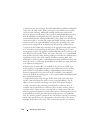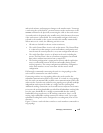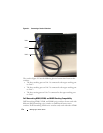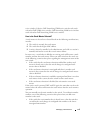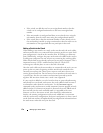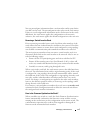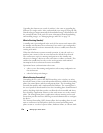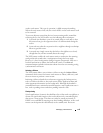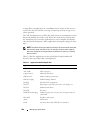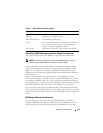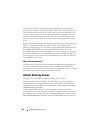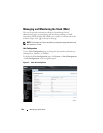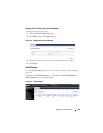
180 Managing a Switch Stack
storage allows an application on a standalone unit to retain its data across a
restart, but since the amount of storage is limited, persistent storage is not
always practical.
The NSF checkpoint service allows the stack master to communicate certain
data to the backup unit in the stack. When the stack selects a backup unit,
the checkpoint service notifies applications to start a complete checkpoint.
After the initial checkpoint is done, applications checkpoint changes to their
data.
Table 9-1 lists the applications on the switch that checkpoint data and
describes the type of data that is checkpointed.
NOTE: The switch cannot guarantee that a backup unit has exactly the same data
that the stack master has when it fails. For example, the stack master might fail
before the checkpoint service gets data to the backup if an event occurs shortly
before a failover.
Table 9-1. Applications that Checkpoint Data
Application Checkpointed Data
ARP Dynamic ARP entries
Auto VOIP Calls in progress
Captive Portal Authenticated clients
DHCP server Address bindings (persistent)
DHCP snooping DHCP bindings database
DOT1Q Internal VLAN assignments
DOT1S Spanning tree port roles, port states, root bridge, etc.
DOT1X Authenticated clients
DOT3ad Port states
IGMP/MLD Snooping Multicast groups, list of router ports, last query data for
each VLAN
IPv6 NDP Neighbor cache entries
iSCSI Connections
LLDP List of interfaces with MED devices attached



